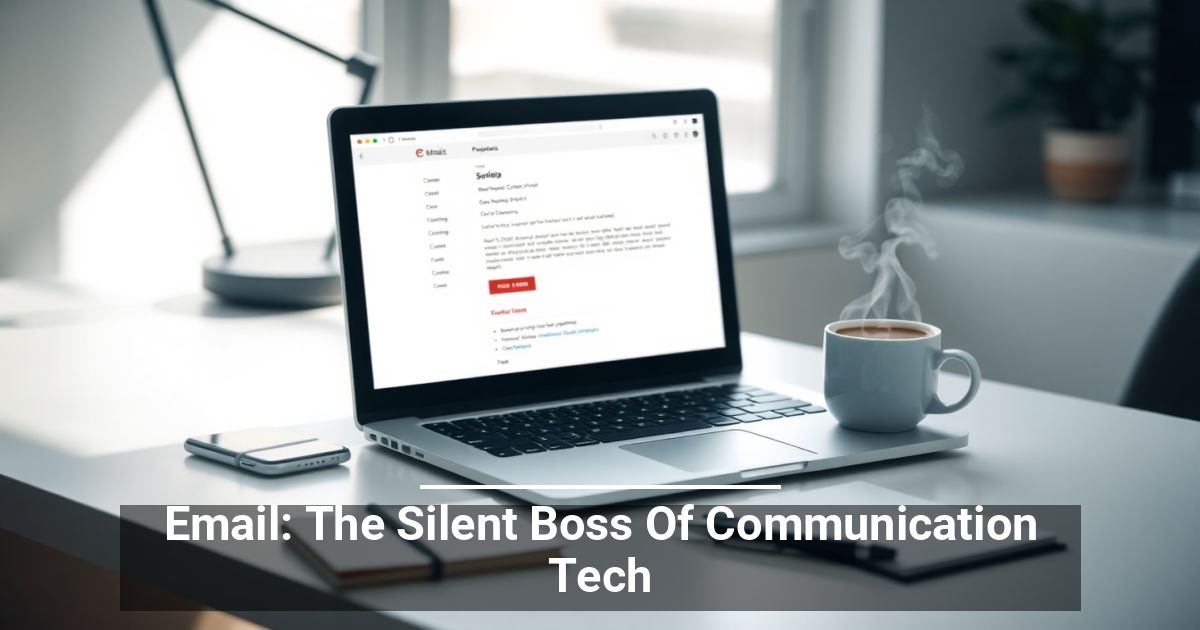 Have you ever stopped to think about how much gets done through email? It might not be the flashiest option in your tech stack, but it's often the most productive. See why it remains popular despite the rise of newer, trendier alternatives.
Have you ever stopped to think about how much gets done through email? It might not be the flashiest option in your tech stack, but it's often the most productive. See why it remains popular despite the rise of newer, trendier alternatives.
The Backbone of Business Collaboration
As the digital world evolves, we gain fresh ways to connect and communicate. The most popular tools today include:
- Instant message platforms
- Video conferencing for company meetings and live presentations
- Cloud-based file-sharing tools
- Document editors for working on projects together in real-time
- AI assistants that make schedules and send reminders
It's easy to assume that these new conveniences will make traditional methods obsolete, but this is not the case. Exclaimer gathered over 4,000 responses from global IT leaders for its "State of Business Email 2025" report, which revealed that email remains the dominant communication channel in many industries.
What Makes It Timeless?
The study also found that nearly half of all external and internal communications still involve an email client. In larger establishments (5,000+ employees), 49% of respondents say each worker sends over 16 messages per day. Here are the possible reasons why:
A Solid Track Record
A platform like Gmail has set the standard for reliability. Since it's under the wings of an industry giant like Google, users feel confident using it daily. The service receives continuous fine-tuning to address safety and performance needs.
Modern alternatives may offer flashy features, but they lack the proven stability that organizations need for mission-critical communications.
A "Formal" Communication Channel
Chat applications are excellent for quick, real-time conversations. They're ideal for instant updates, making quick decisions, or team collaboration.
When it comes to detailed reports, formal agreements, or professional proposals, businesses still need a more structured option. Platforms that prioritize long-form content allow room for clarity and thorough formatting.
Traceability and Permanence
We all complain about our full inbox, outbox, and spam folders, but it's this thorough record-keeping that guarantees important communications won't get lost.
With a searchable history of conversations, departments can better avoid misunderstandings or missed details. It also sets expectations for accountability.
Bridging Gaps
The organization-wide adoption of newer tools is rare because each team has its unique workflow. One might prioritize specific features or platform structures to fit their needs, while another favors simplicity.
The easiest way to keep everyone on the same page is through a good baseline. Everyone already has an email address. It's familiar, reliable, and doesn't require extensive training or adjustments.
Security and Privacy
The Simple Mail Transfer Protocol (SMTP) was once sufficient for sending messages safely, but times have changed. Cyber threats are becoming sophisticated, and data breaches continue to be a significant concern.
Established services like Gmail prioritize security with features such as two-step verification, AI-powered phishing detection, and end-to-end encryption.
Securing Communication in the Modern Business Landscape
Businesses must strike a balance between traditional tools, such as email, and modern collaboration platforms to remain competitive and thrive. Integration ensures streamlined workflows, improves communication, and enables your organization to adapt to evolving operational demands effortlessly.


